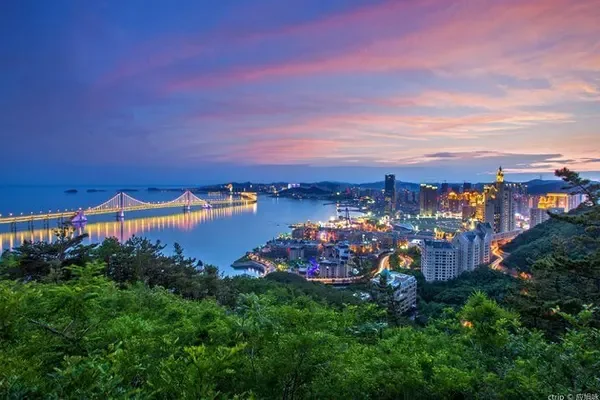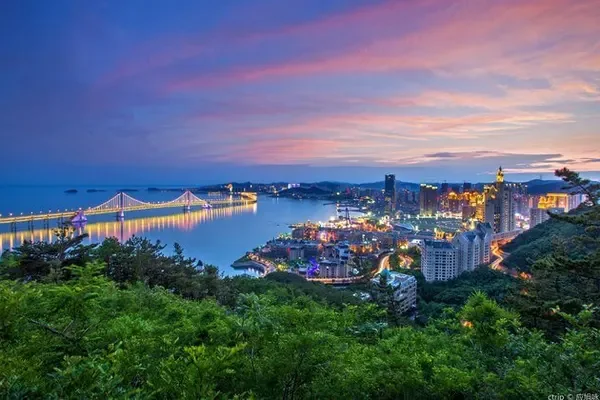

A small town with two historical treasures
Most of the place names in Ningxia are related to "Fort".
For a long period of time in history, Ningxia has been in the interlaced belt of farming and nomadic civilizations. For the needs of reclamation and garrisoning, successive dynasties have built castles and military settlements here.

Today, most of the castles of that year are hard to find, but the name has been preserved.
Many place names still use the old titles, such as Ning'an Fort, Pingji Fort, the most famous one is Zhenbei Fort Film and Television City, and Huangduo Fort mentioned below.

Today's Huangduobao is an ordinary town in Guyuan, but there are two precious historical heritages here - the ancient city of Huangduobao and the Grottoes of Mount Xumi.

If I didn't look carefully, I thought it was some earthen walls.
The ancient city of Huangduobao is located in the center of Huangduobao Town. During the Ming Dynasty, a man named Huangduo was in charge of guarding this place, so it was named "Huangduobao".
It takes more than 3 hours to drive from Yinchuan to Huangduobao, and the town center is not far from the expressway exit. When we were about to leave the town center, a row of uneven earthen walls appeared beside the road.
This is the ancient city of Huangduobao.

In addition to the newly built city gates, today's ancient city still retains several incomplete city walls, which are made of rammed loess and are more than one person high.
This piece of earth wall is integrated with the surrounding roads and farmland. It is very inconspicuous on the side of the road. If you don't look carefully, you may think it is a few ordinary loess walls in the countryside.

An important border town, from Pingxia City to Huangduobao
According to the "History of the Song Dynasty", Huangduobao was an important military town established in the Northern Song Dynasty to defend against the attack of Xixia in the north, so it was also called "Pingxia City".
Historically, Pingxia City has undergone several expansions. In the early years of Hongwu in the Ming Dynasty, a man from Guyuan named Huang Cheng was granted the hereditary command right here by the emperor because of his meritorious service in the war. Later it was renamed "Huangduobao".

Overlooked from the air, Huangduo Fort is rectangular in shape, with obvious inner and outer walls. The barely visible city wall encloses the entire Huangduobao Village and a large area of farmland.
Climbing up the city wall and looking into the distance, the outside of the city wall is no longer a barren scene outside the Great Wall, replaced by peace and tranquility. Presumably the soldiers guarding the border back then often stood on the city wall and looked into the distance like me.

Buddhist sacred mountain, a group of grottoes built on the cliff face
In addition to the ancient city of Huangduobao, there are also the Xumishan Grottoes.
Xumishan Grottoes are located on Mount Xumi a few kilometers away from the ancient city of Huangduobao. It can be reached in 10 minutes by car from the town center.

"Xumi" is Sanskrit, which means the highest Foshan in the center of the world. After more than 300 years of construction from the Northern Wei Dynasty to the Tang Dynasty, the Sumeru Grottoes have a history of more than 1,500 years.
To visit the Mount Sumeru Grottoes, you must be prepared for hard climbing. Unlike Yungang and Dunhuang, which are excavated on flat rock walls, the Mount Sumeru Grottoes are built along the mountain and scattered on steep cliffs.

There are more than 100 caves, large and small, in the entire Mount Sumeru. The most famous and well-preserved cave is No. 5, which is commonly known as the Great Buddha Building.
This Buddha statue is more than 20 meters high, more than 3 meters taller than the Lushena Buddha in Longmen Grottoes. It's a pity that the Great Buddha Building is being repaired and strengthened, and it is not open to the public. It is estimated that tourists will not be able to see the true face of the Great Buddha before 2022.

Unlucky fate, tenaciously continue to write the glory of the Silk Road
Like the Yungang and Dunhuang Grottoes, the Sumeru Grottoes are also an important relic on the ancient Silk Road.
However, the popularity of Mount Sumeru Grottoes is obviously far less than that of popular grottoes such as Yungang and Dunhuang. The main reason is that Mount Sumeru has few well-preserved caves and statues.

Most of the grottoes here are badly damaged or are closed for repair. If you search for the Mount Sumeru Grottoes on the Internet, perhaps the cinnabar-colored stone stairs on Mount Sumeru appear more frequently.

During the thousands of years from the Northern Wei Dynasty to the Qing Dynasty, the Sumeru Grottoes have been destroyed and rebuilt several times.
In 1920, the largest earthquake ever recorded occurred in the Haiyuan area, which caused a devastating blow to the Xumishan Grottoes.

Today, we can only glimpse the prosperity and splendor of the past through a very small number of caves and statues. However, the Sumeru Grottoes, which have gone through several times of urging, are still standing here, stubbornly continuing to write the glory of the Silk Road in the past!

Travel Tips Tips:
[Location] Huangduobao Ancient City and Xumishan Grottoes, Huangduobao Town, Yuanzhou District, Guyuan City, Ningxia
[Traffic strategy] Self-driving navigation to the destination, along the Fuzhou (Zhou) Yin (Chuan) Expressway to the exit of Sanying, and drive westward for about 10 kilometers
[Expense budget] Huangduobao ancient city is free; Xumishan Grottoes tickets (including grottoes and museums) + sightseeing car 64 yuan / person
[Precautions] There are often grottoes under repair at the Mount Sumeru Grottoes. Before going there, you should learn about them in advance to avoid running out of space. For example, the Dafo Tower is scheduled to be repaired until early 2022. To visit the Mount Sumeru Grottoes requires climbing, and some sections of the road are relatively steep. It is recommended to wear sports shoes.


